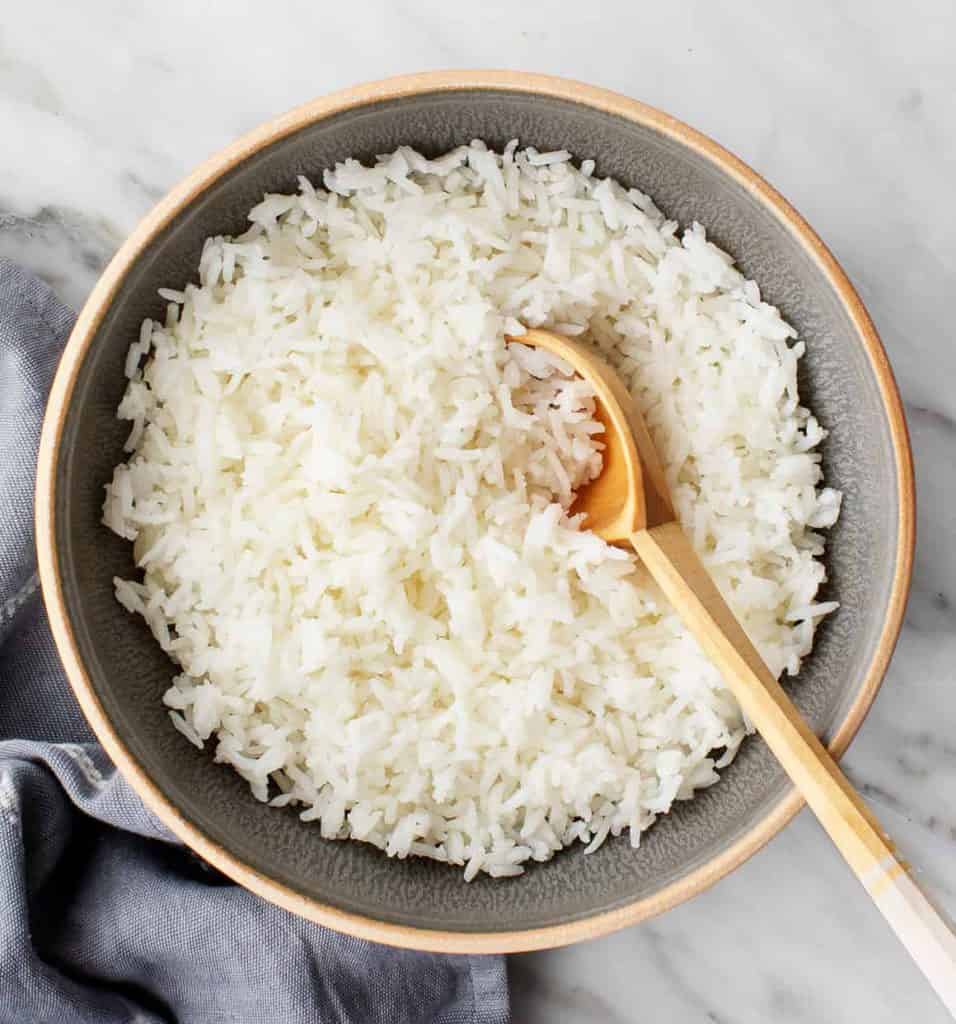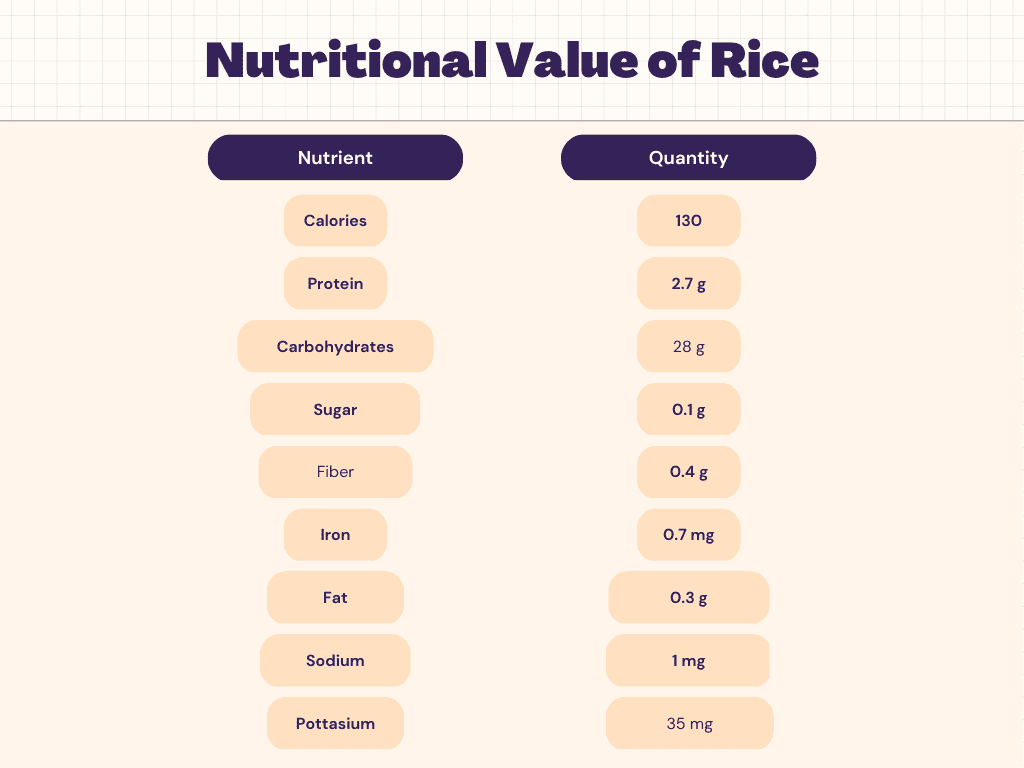Carbohydrates included in rice (Oryza sativa) provide energy but may also cause blood sugar levels to rise. More fiber in brown rice supports digestive health and lowers inflammation. Although brown rice has greater health advantages, white rice is the most popular variety. Brown rice is available in several hues, such as reddish, purple, or black.
Rice is used to produce a wide range of goods, including rice milk, rice syrup, rice flour, and rice bran oil. More than half of the world’s population uses white rice as a staple component, largely because of its adaptability, availability, and ability to take on any flavor or seasoning. There are numerous varieties of rice. Whole-grain brown rice has a nutty flavor. Because it is a refined grain, white rice lacks the fiber that whole grains do. Here in this article, we will talk about white rice.
Nutritional Value of Rice
Nutritional Facts Of Rice
Carbs
White rice has more than 53 grams of carbohydrates per serving. Fiber only makes up a very little portion of that carbohydrate. The majority of it is starch, while the remainder is sugar.
White rice is thought to have a glycemic index of 73. Brown rice, on the other hand, is thought to have a glycemic index of around 68. Long-grain, medium-grain, and brown rice all have lower glycemic indexes than short-grain rice.
Fat
If you cook white rice without using any butter or oil, there is almost no fat in it.
Protein
For comparison, a cup of white rice contains over 4 grams of protein while a cup of brown rice contains over 5 grams.
Calories
Over 30% of the daily value of manganese is found in white rice, making it a great source of this mineral (DV). It also contains 2.7 mg of iron, or 15% of the DV, making it a healthy source of iron. B vitamins are also present in white rice (especially thiamin, but also niacin and riboflavin).
Health Benefits Of Rice
- Supports the muscles, nerves, and bones – White rice has 14.9 mg of magnesium per serving, which might help you meet the 420 mg daily allowance.
- Relative to Colon Health – When rice is cooked and cooled, its resistant starch content increases.
- Safe for Celiac Disease Patients – Since rice is a naturally gluten-free grain, both those with celiac disease and those with non-celiac sensitivity can benefit from its use. Bread, noodles, syrup, and flour can all be manufactured from rice.
- Provides quick energy – White rice is a good source of energy for athletes who require a lot of carbohydrates. Because white rice has more carbs and less fiber than brown rice, many people prefer it.
Vitamins & Minerals in Rice
White rice has more than 53 grams of carbohydrates per serving. Fiber only makes up a very little portion of that carbohydrate. The majority of it is starch, while the remainder is sugar. Short-grain cooked white rice contains 242 calories per cup (186g). This is made up of 7.2% protein, 1% fat, and 88% carbohydrates.
The Bottom Line
The food mainstay of the entire world is rice. However, because of its health advantages, brown rice is also becoming quite well-liked. Because it is a great source of many healthy minerals and antioxidants, rice is beneficial for heart and intestinal health. White rice, particularly sticky rice, delivers less vitamins and can raise the risk of type 2 diabetes, on the other hand. Make careful to read the vitamin statistics panel, assess the nutrient level, and purchase enhanced rice while it is still available.
FAQs
How much Rice can I eat in a day?
White rice can be eaten less frequently than once a day. A study in the journal BMC Public Health found that consuming white rice regularly increases the risk of type 2 diabetes. In addition, regular eating of white rice raises the risk of heart disease, according to the American Journal of Clinical Nutrition.
What is healthier brown or white Rice?
Compared to white rice, quinoa offers higher fiber. However, there aren’t any appreciable calorie disparities between them. Both ingredients are healthy additions to a balanced diet. Quinoa, though, is at the top. There aren’t many necessary amino acids in brown rice. It is a full protein, though.
What is the best time to eat Rice?
The ideal time to eat rice is during lunch. There are two reasons for this. First off, our metabolism is higher throughout the day, and our bodies will assimilate all dense, healthful foods.
What are the benefits of Rice?
- It can stabilize blood sugar levels.
- It is gluten-free.
- It’s a powerhouse of energy.
- It Aids heart health.
- It’s easy to digest.
- Keeps your gut healthy.










